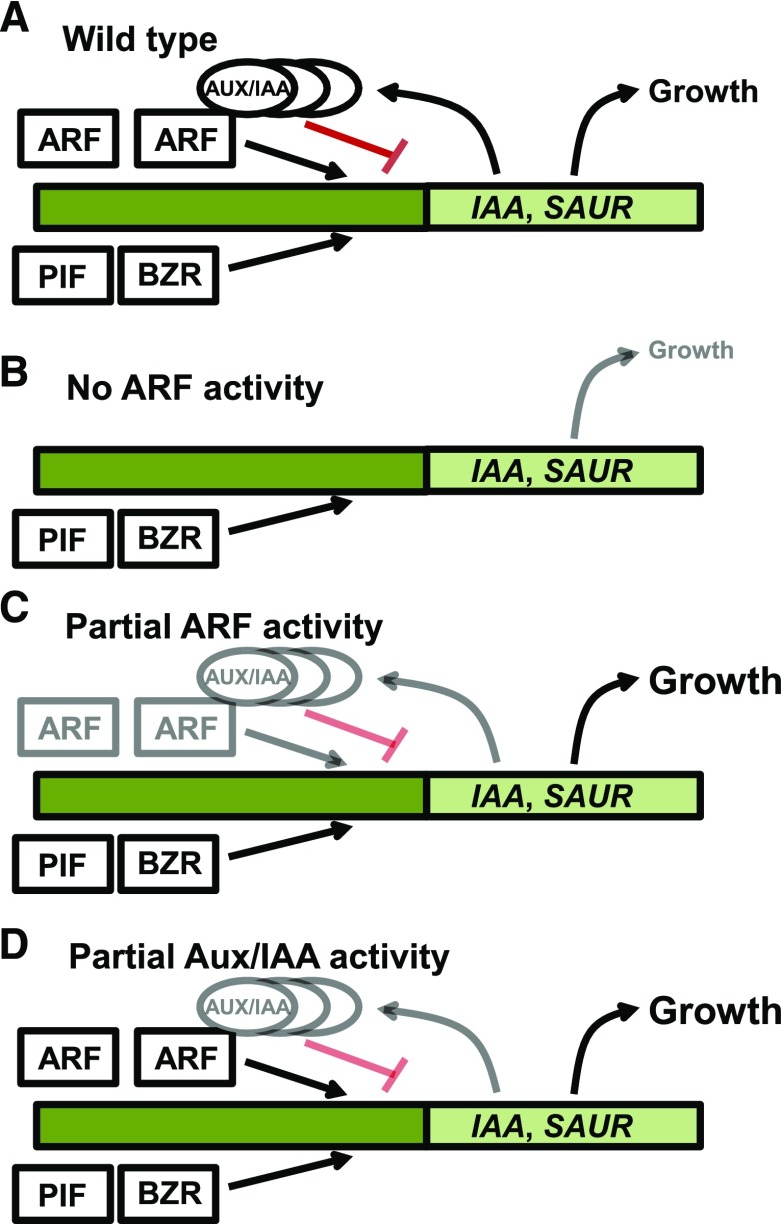Figure 5.
Conceptual model for ARF-Aux/IAA control of hypocotyl growth. A, In wild-type seedlings, ARF, PIF, and BZR/BES transcription factors regulate expression of growth-promoting genes such as SAUR genes and of IAA genes encoding Aux/IAA repressors of transcription. When the auxin level is high, Aux/IAA proteins are turned over and ARF transcription factors can activate gene expression. When auxin levels are low, ARF-Aux/IAA protein complexes are more persistent and repress gene expression. B, In the absence of ARF6, NPH4/ARF7, and ARF8, elongation depends primarily on PIF and BZR/BES factors and is reduced in darkness and other conditions that require an auxin response. C, An intermediate ARF level, as in arf double mutants, may decrease both gene activation by ARF transcription factors and gene repression by ARF-Aux/IAA complexes. Levels of IAA gene transcription may be increased or decreased depending on the gene. These combined effects produce an altered regulatory balance. In darkness, this decreases growth, whereas in diurnal conditions, the balance of gene expression favors slightly increased growth. Additional feedbacks and non-cell-autonomous effects such as PIF regulation of auxin biosynthesis genes likely also contribute to the final output. D, A reduced Aux/IAA level, as in aMIR-IAA plants, decreases repression by ARF-Aux/IAA complexes, leading to increased ARF activation of SAUR genes and slightly increased growth.

